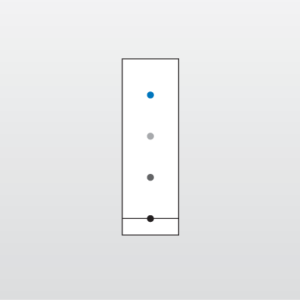Thin-Layer Chromatography (TLC)
Home » Our Techniques » Chromatography » TLC
TLC, or Thin-Layer Chromatography, is a commonly used technique in synthetic chemistry to check for purity and the progress of reactions. TLC uses a stationary phase, typically a silica gel bound to a plastic, glass or aluminum backing, and a mobile phase, typically common organic solvents such as ethyl acetate or hexane, to separate components of a reaction or sample.
The movement of analytes on a TLC plate is measured by the Rf value. Rf stands for retardation factor. The Rf value is defined as the ratio of the distance an analyte moved to the distance the solvent front moved. The Rf value of analytes in a reaction or sample can and should be adjusted by changing the mobile phase in order to give optimum separation. In TLC, the optimum Rf value is totally dependent on the reaction or sample you are working with. For checking reaction progress, you merely need to see the individual reaction components separate from each other. For separation of a product from the leftover reactants, the Rf of the product is preferred to be lower in order to keep the analyte on a column longer.

TLC plates can be visualized by UV light or staining, depending on if the analytes of interest are UV active.
Ideal Uses of TLC
- Choosing an appropriate solvent phase for column chromatography to separate compounds
- Checking the progress of the reaction
- Determining product purity
- Determining the number of analytes present in a sample
- Monitoring the separation of column chromatography
Strengths
- Small sample size
- Allows for optimization of chromatography inexpensively
- Quick and simple
Limitations
- The length of the TLC plate is often limited
- Humidity and temperature of the room can have an effect on TLC
- Not as specific as other chromatography techniques
Would you like to learn more about using Thin-Layer Chromatography (TLC)?
Contact us today for your Thin-Layer Chromatography (TLC) needs. Please complete the form below to have an EAG expert contact you.